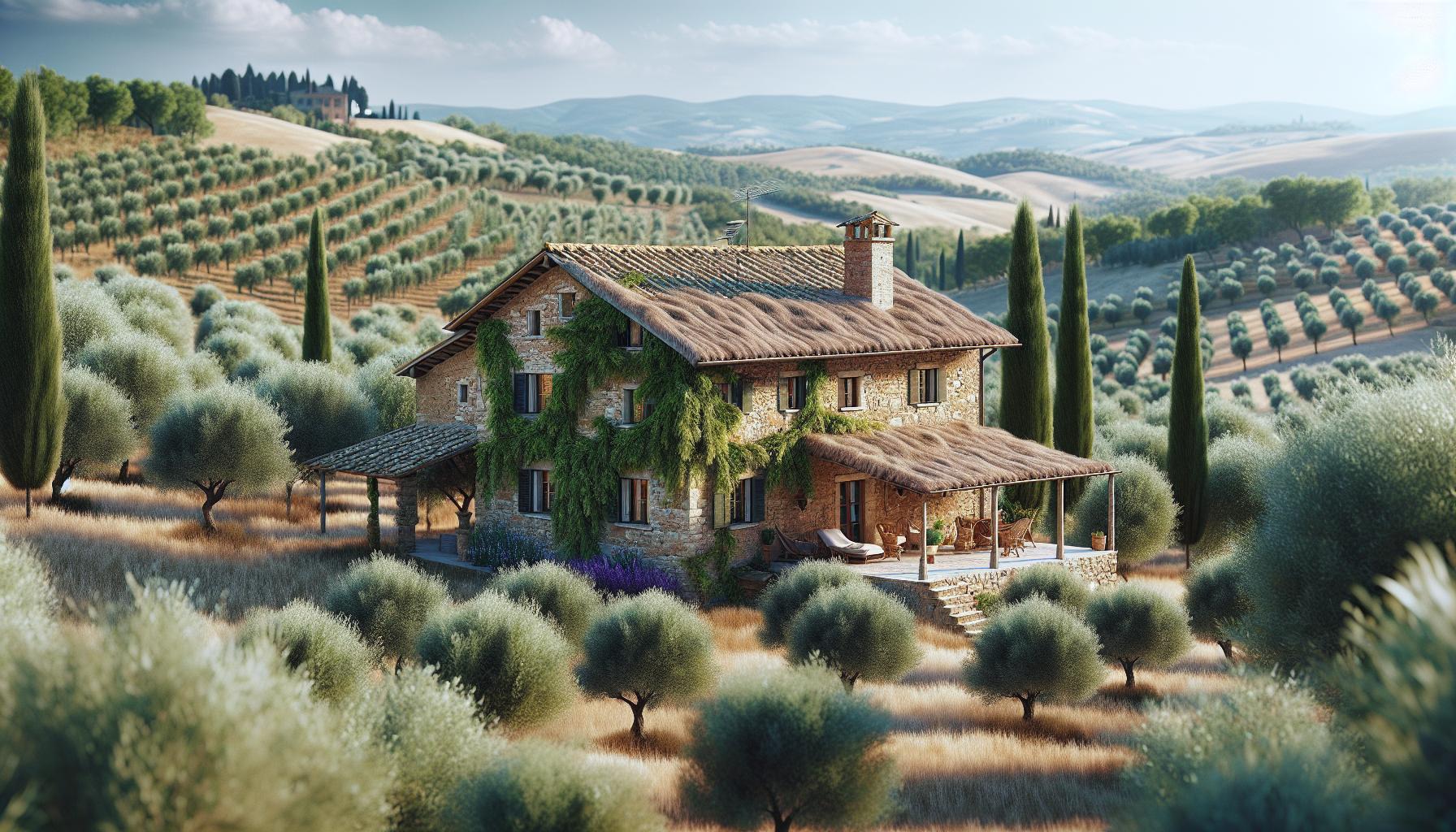Rolling hills dotted with cypress trees ancient villages and world-class wineries make Tuscany a dream destination for travelers seeking la dolce vita. This enchanting region of central Italy offers countless possibilities for memorable stays from rustic farmhouses to luxury villas.
Whether it’s wandering through Florence’s Renaissance masterpieces sipping Chianti in medieval hill towns or relaxing poolside at a countryside estate Tuscany delivers unforgettable experiences. The challenge isn’t finding a beautiful place to stay – it’s choosing from the countless stunning options across this diverse region. From the cultural riches of Siena to the serene Valdorcia Valley there’s a perfect Tuscan home base for every type of traveler.
Best Regions to Stay in Tuscany
Tuscany offers distinct regions that cater to different travel preferences, from urban exploration to countryside retreats. Each area presents unique characteristics in terms of accommodation options, attractions, and experiences.
The Historic Center of Florence
Florence’s historic center places visitors within walking distance of Renaissance masterpieces like the Uffizi Gallery and Ponte Vecchio. Luxury hotels occupy converted palaces along cobblestone streets, while boutique B&Bs provide intimate stays in centuries-old buildings. The area around Piazza della Signoria offers premium accommodations with views of the Duomo. Popular districts include Santa Croce for its artisan workshops and San Lorenzo for its authentic Florentine atmosphere.
The Rolling Hills of Chianti
Chianti combines vineyard views with luxurious agriturismos and restored farmhouses. Properties between Greve and Castellina provide easy access to wine tastings at family-owned estates. Traditional stone villas feature private pools overlooking olive groves and cypress-lined roads. The area connects travelers to medieval villages like Radda and Panzano, known for their wine cellars and traditional restaurants.
Medieval Charm of Siena
Siena’s historic center offers accommodations in converted noble residences surrounding the famous Piazza del Campo. Boutique hotels occupy Gothic palazzos with original frescoes and period furnishings. The San Domenico district provides peaceful stays away from tourist crowds while maintaining proximity to attractions. Properties near Via di Città offer views of the Duomo and access to traditional Tuscan restaurants.
Val d’Orcia’s Scenic Landscapes
Val d’Orcia features restored country estates and luxury spa resorts near thermal towns like Bagno Vignoni. Accommodations range from converted monasteries to hillside villas overlooking cypress-dotted valleys. Properties near Pienza offer access to artisanal cheese producers and Renaissance architecture. The area around Montalcino provides stays at wine estates producing renowned Brunello wines.
Types of Tuscan Accommodations

Tuscany’s accommodation options reflect the region’s diverse character through distinctive stays ranging from opulent hotels to rustic farmhouses. Each property type delivers unique experiences that connect visitors to Tuscan culture heritage.
Luxury Hotels and Resorts
Tuscany’s luxury hotels occupy restored Renaissance palaces featuring original frescoes marble staircases. Five-star properties like Portrait Firenze Hotel della Ville offer Michelin-starred restaurants rooftop pools overlooking Florence’s skyline. Modern amenities blend seamlessly with historic architecture through temperature-controlled wine cellars private art collections spa facilities. Several resorts incorporate golf courses thermal springs exclusive beach clubs along the Tuscan coast.
Historic Villas and Farmhouses
Traditional Tuscan villas date back to the 15th century featuring stone walls cyprus-lined driveways private olive groves. These restored properties maintain period details like terracotta floors wooden beam ceilings original fireplaces. Many villas include modern kitchens infinity pools outdoor dining terraces. Farmhouses showcase rustic charm through exposed stone walls herb gardens fruit orchards offering an authentic countryside experience.
Boutique Bed and Breakfasts
Family-run B&Bs occupy medieval towers converted townhouses historic palazzos throughout Tuscany’s hilltop towns. These intimate properties feature 4-12 individually decorated rooms highlighting local artisanal furniture handwoven textiles. Guests enjoy homemade breakfasts featuring local cheeses fresh pastries seasonal fruits. Personalized service includes insider recommendations cooking classes wine tasting arrangements.
Agriturismo Experiences
Working farms welcome guests into restored barns cottages estate buildings surrounded by vineyards olive groves. These agricultural stays offer hands-on experiences like grape harvesting cheese making olive oil production. Properties range from simple farmhouses to luxurious estates with swimming pools cooking schools wine cellars. Guests participate in seasonal activities including truffle hunting wine making pasta making classes.
Top Tuscan Towns for Different Travel Styles
Tuscany’s diverse towns cater to distinct travel preferences with unique characteristics. Each destination offers specialized experiences that match specific interests from art enthusiasts to wine connoisseurs.
Florence for Art and Culture
Florence stands as the epicenter of Renaissance art with over 70 museums throughout the city. The Uffizi Gallery houses 1,500+ pieces of priceless artwork, including Botticelli’s Birth of Venus. Visitors find accommodations in converted 15th-century palaces along the Arno River, placing them steps from the Ponte Vecchio. Cultural enthusiasts discover authentic artisan workshops in the Oltrarno district, where traditional crafts continue in family-run botteghe dating back generations.
San Gimignano for Medieval History
San Gimignano’s 14 medieval towers create the most distinctive skyline in Tuscany. Medieval architecture dominates the town with 12th-century walls encircling preserved Gothic palaces. Visitors stay in restored tower houses offering panoramic views across the Elsa Valley. The town center features the 13th-century Palazzo Comunale containing frescoes by Lippo Memmi, while the Collegiate Church displays 14th-century biblical scenes through vibrant frescoes.
Lucca for Laid-back Charm
Lucca’s 4.2-kilometer Renaissance walls transform into a tree-lined promenade perfect for cycling or walking. The historic center contains over 100 churches, including the striking San Michele in Foro with its ornate facade. Accommodations occupy noble residences around the oval-shaped Piazza dell’Anfiteatro, built on ancient Roman ruins. Local cafes line the narrow streets, serving traditional pastries like bucellato in centuries-old establishments.
Montepulciano for Wine Lovers
Montepulciano produces the celebrated Vino Nobile in 250+ hectares of vineyards surrounding the town. Historic wine cellars occupy medieval caves beneath 16th-century palaces, offering tastings of DOCG-classified wines. Visitors stay in converted wine estates with views across the Val d’Orcia. The town’s main street, Corso, connects eight wine tasting rooms in historic palazzos between Porta al Prato and Piazza Grande.
Transportation and Accessibility Tips
Navigating Tuscany requires strategic planning to maximize exploration of its diverse landscapes. The region offers multiple transportation options that connect major cities with remote hilltop towns.
Getting Around by Car
Renting a car provides the most flexibility for exploring Tuscany’s countryside. International car rental agencies operate at Florence Airport, Pisa Airport, and major train stations throughout the region. Many Tuscan hill towns feature ZTL (limited traffic zones) in their historic centers, with automated cameras issuing fines to unauthorized vehicles. Parking lots outside city walls offer convenient alternatives, connecting to town centers via short walks or shuttle buses. A GPS navigation system proves essential for navigating the winding country roads and locating remote villas or agriturismos.
Public Transportation Options
Regional trains connect major Tuscan cities like Florence, Pisa, Siena, and Lucca with frequent daily service. The high-speed rail lines link Florence to Rome in 90 minutes and Milan in under 2 hours. Local buses operated by companies like SITA and Tiemme reach smaller towns and villages not served by trains. Combined train-bus tickets enable seamless transfers between different modes of transport. Florence’s compact historic center features an efficient electric bus network, while other major cities offer reliable urban bus services. Advance booking through Trenitalia’s website or app secures the best train fares.
When to Visit Tuscany
Tuscany experiences distinct seasonal changes that affect accommodation prices, crowd levels, and outdoor activities. Understanding these patterns helps travelers optimize their experience in this Italian region.
Peak vs Off-Season Travel
Peak season in Tuscany runs from June through August, with hotel rates rising 40% above annual averages. Crowds concentrate in popular destinations like Florence’s Uffizi Gallery, where wait times extend to 3 hours. April, May, September, and October offer moderate crowds with 30% lower accommodation rates. November through March marks the low season, featuring the lowest prices at 50% below peak rates. Attractions operate on reduced winter schedules but provide intimate experiences without tourist crowds. December brings Christmas markets to medieval towns, while January offers excellent deals on luxury accommodations.
Weather Considerations
Tuscany’s Mediterranean climate creates hot summers with temperatures reaching 90°F (32°C) in July and August. Spring temperatures range from 55-70°F (13-21°C), ideal for outdoor activities like vineyard tours or countryside walks. October averages 65°F (18°C) with occasional rain showers, perfect for visiting indoor attractions. Winter temperatures hover around 45°F (7°C) with increased rainfall, particularly in November and February. Coastal areas like Maremma maintain milder temperatures year-round, averaging 5°F warmer than inland regions. The Val d’Orcia experiences greater temperature fluctuations due to its elevated position.
Conclusion
Tuscany stands as a timeless destination that offers something for every type of traveler. Whether it’s a luxury hotel in Florence’s historic center a charming B&B in San Gimignano or a rustic agriturismo in the Chianti hills visitors will find their perfect home away from home.
The key to an unforgettable Tuscan experience lies in choosing accommodations that align with individual travel goals and preferences. With proper planning travelers can enjoy the region’s rich cultural heritage world-class cuisine and breathtaking landscapes while staying in accommodations that enhance their Italian adventure.
The magic of Tuscany awaits those ready to immerse themselves in its unique blend of history art cuisine and natural beauty.

